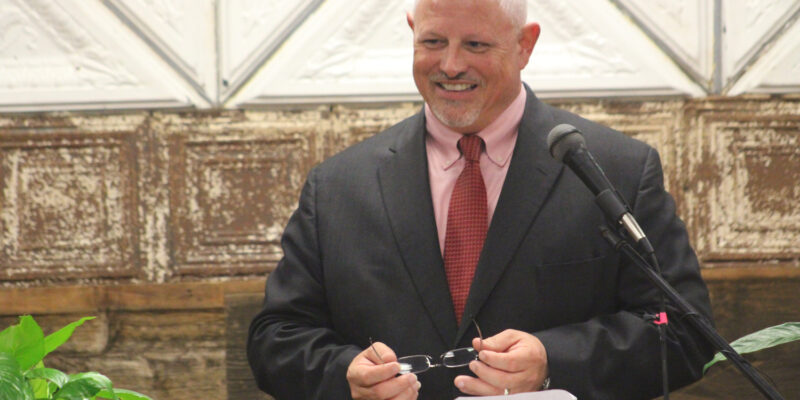The soap opera concerning possible reapportionment of Louisiana’s Supreme Court districts looks to spill over to a third try in the 2024 Regular Session of the Louisiana Legislature, caught up in electoral politics directly affecting at least one declared candidate for the open Second District seat later this year.
At the First Extraordinary Session, the Senate refused to move a bill that would have accomplished this. It did so again this week during the Second Extraordinary Session, although under somewhat different circumstances.
Considering the context is crucial to understanding the machinations involved. Nothing legally requires the state to do this. As judicial elections cover offices not considered policy-making and therefore not necessary to represent constituencies, neither equal apportionment nor guarantees that district arrangements not impair the ability of minority groups to elect candidates of their own choosing apply to judicial reapportionment questions. Thus, Louisiana’s current environment of seven districts with enormous population districts and just one majority-minority district in a state where about a third of the population claims black ancestry is perfectly constitutional.
That hasn’t stopped special interests from suing the state to double the number of M/M districts. In litigation now for nearly five years, the case has yet to come to trial, and for the plaintiffs to succeed, it would take a massive change in jurisprudence, although Louisiana is an extreme outlier in this instance — it’s the only state whose court of last resort has its members elected from single-member districts in a partisan fashion without retention elections.
As of late, Republican Atty Gen. Liz Murrill has estimated that beating back this litigation would cost the state $10 million, and her predecessor Republican Gov. Jeff Landry has backed efforts to end the malapportionment and create two M/M districts. They have lobbied the Legislature to do this, unsuccessfully.
In January, the effort fell apart because two of the sitting Court justices, no party John Weimer from the Sixth District and Republican Scott Chrichton of the Second objected to having their districts suffering major alterations, as well as several Republican senators echoing their complaints. Weimer would have found himself out of his current southern coastal district and therefore unable to serve, while Chrichton who is retiring at the end of this year complained on principle how the arrangement sliced and diced the current northwestern Second. As well, some Republicans weren’t too keen, from a partisan perspective, of essentially giving away a seat on the Court.
This month, the next iteration of the map didn’t draw justices’ opposition because it would have allowed Weimer to retain his seat by drawing the Second differently (if meandering and clearly designed with race in mind) so that it sprawled over the northeastern part of the state and flowed across into the Capitol region and Florida parishes that also shifts Republican Justice Jay McCallum’s Fourth District westward all the way to the Texas border, although that does split Caddo Parish.
This plan reflects a settlement deal Atty Gen. Murrill worked out, with her using the argued certitude that the plaintiffs, who are supported by deep-pocketed leftists, would keep the case going to cost the state plenty despite the run of play judicially against them. But that wasn’t enough enticement for GOP senators present on the Senate and Governmental Affairs Committee to eschew a desire to make adjustments to the map, which both would not have followed the settlement and may not have adhered to the session call which explicitly mentioned the settlement. Unable to do so, they torpedoed it.
Advertisement
Which may have brought a sigh of relief for the second time to Republican Second Circuit Court of Appeals Judge Jeff Cox, who recently has signaled his intention to run for Chrichton’s seat. The first map would have plunked him in the new M/M district with little chance of winning, while this next one would have sent him into the Third where McCallum could run for reelection in 2026.
While it appears another attempt will come in the regular session, Court reapportionment success there appears murky, having to compete with far many more bills. Cox should take heart at that, but other GOP responses that could lead to a successful bill could complicate, if not scuttle, his presumed candidacy for the state’s highest court. Floated in years past and in the first session to deal with this was amending the Constitution to provide for nine districts – essentially adding both an M/M district and a non-M/M district – to reach two M/M districts. That strategy could throw Cox into an incumbent’s district, either McCallum’s or Republican James Genovese’s Third District which will become an open seat for 2026. The strategy could even throw it into the new M/M district.
Or, amendments around edges of the just-parked plan could put him into the Third, whose border in that map nudges his Bossier Parish base. While that avoids matching up against an incumbent, his appellate seat also is up at the same time, which throws him into an all-or-nothing choice in 2026 and cheats him out of a potential term starting in 2037, because running this fall would leave him just under the age limit of under 70 at the start of a term for 2035 but over it for 2037.
Any change from the existing map potentially could juice judicial careers, but perhaps no one more than Cox would benefit from nothing happening.
Advertisement
Advertisement

